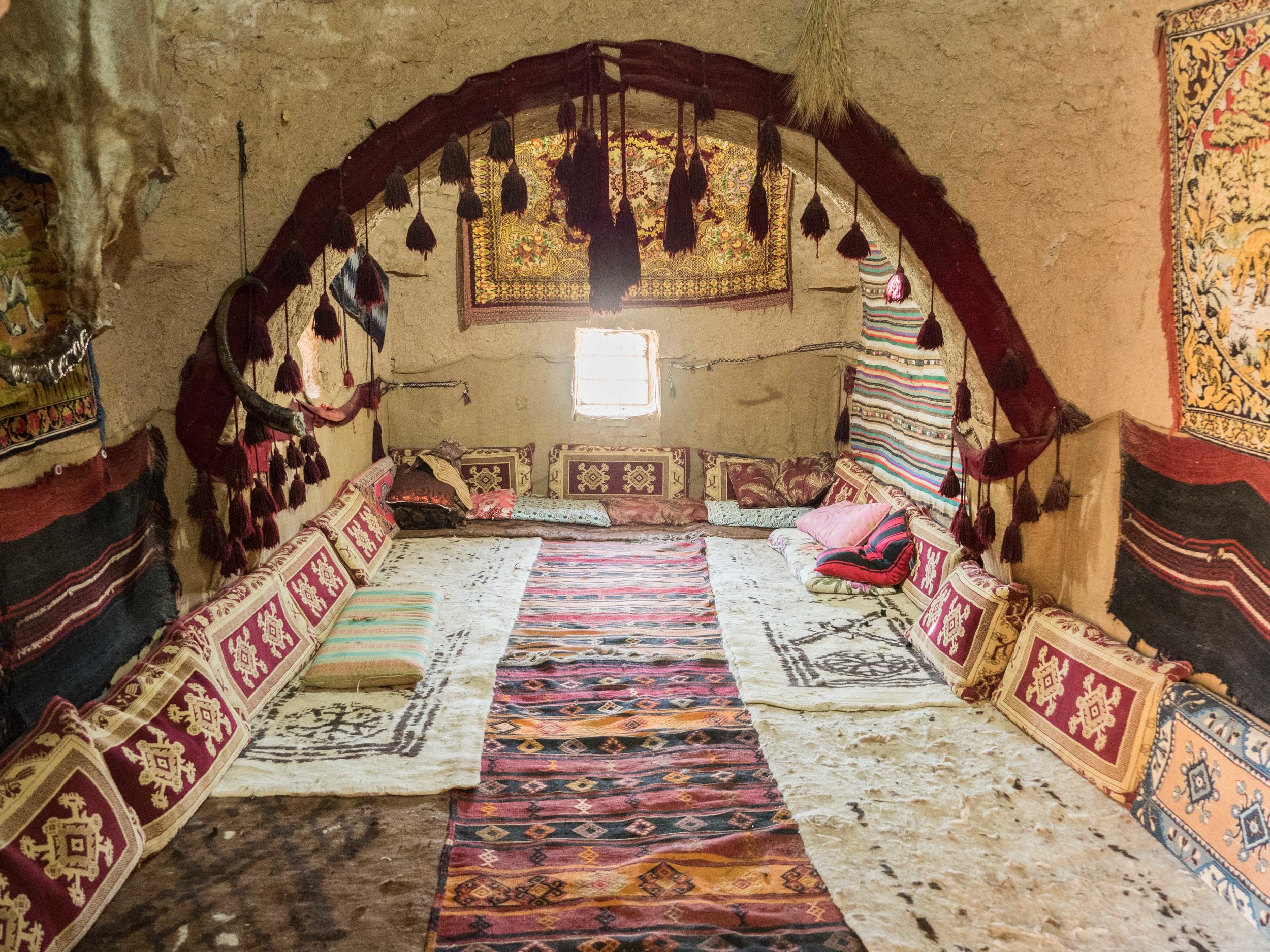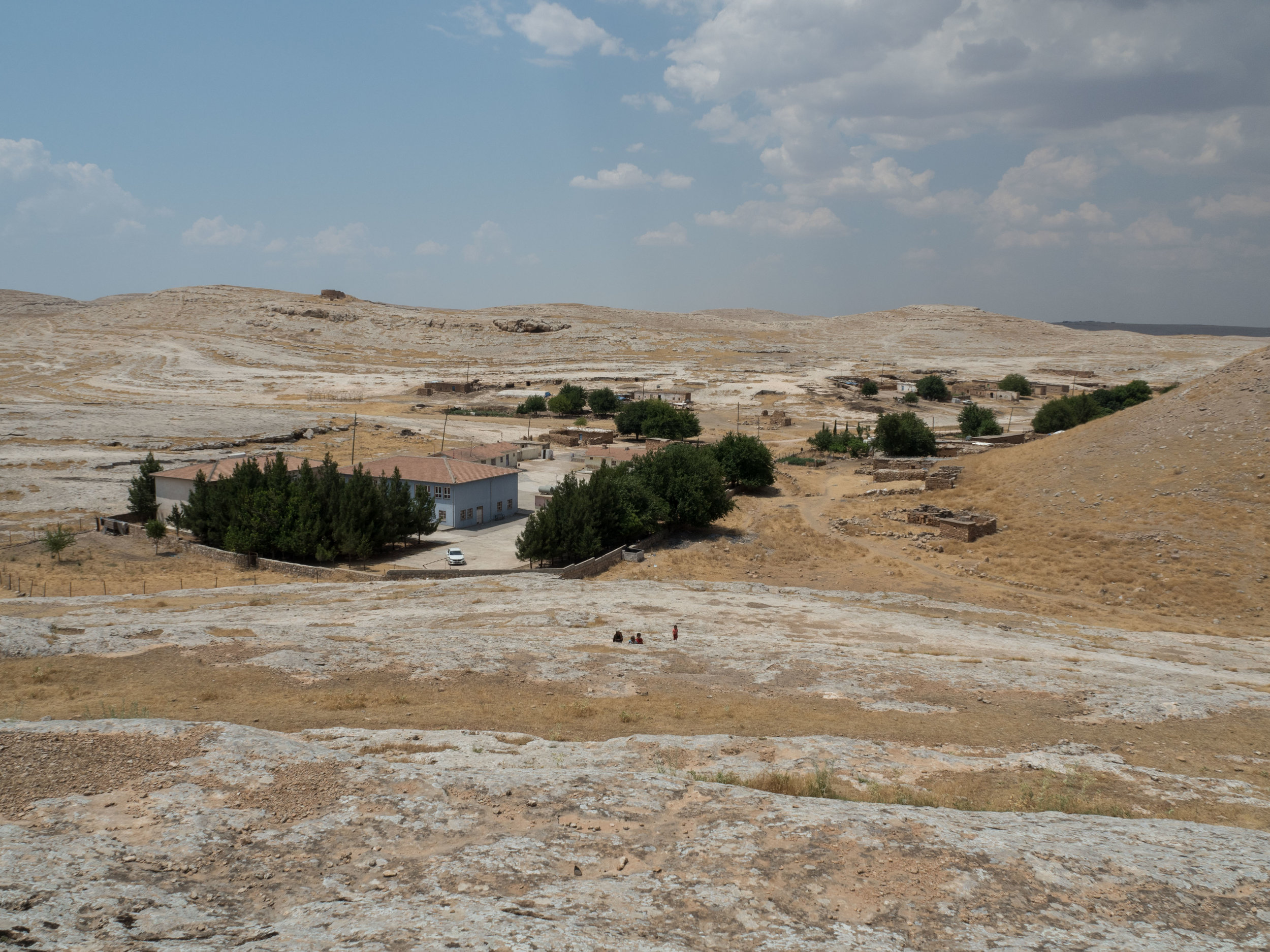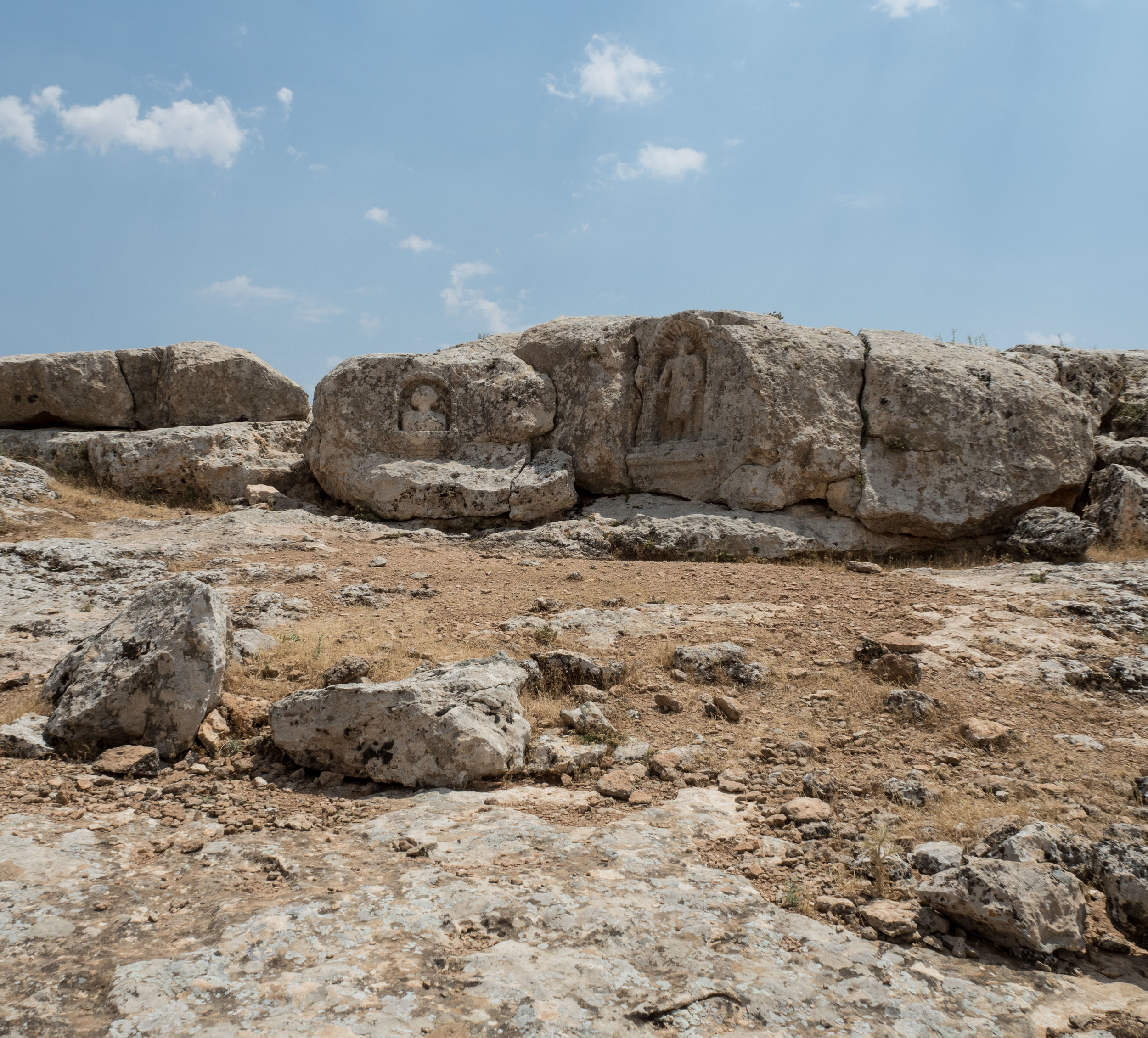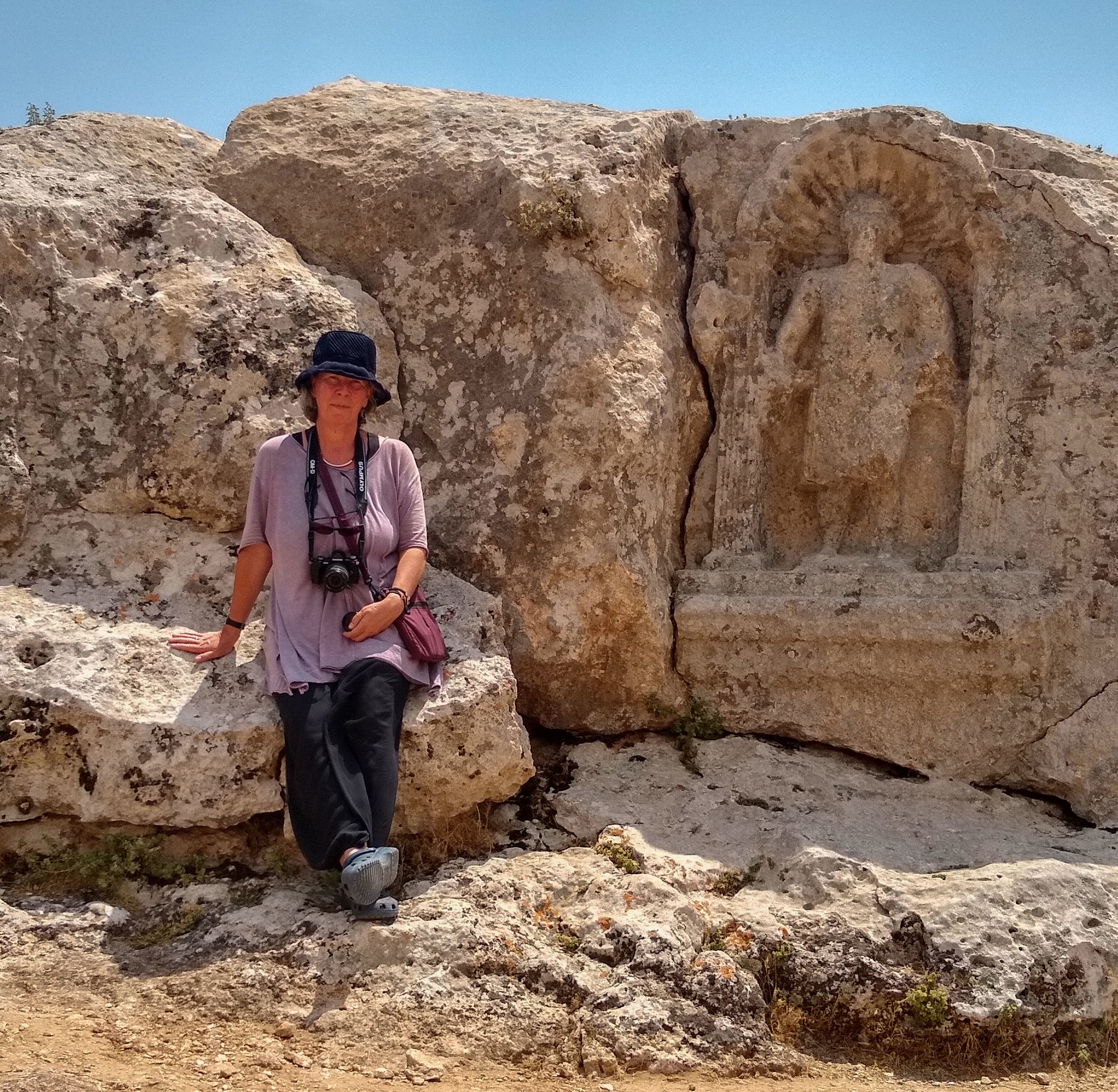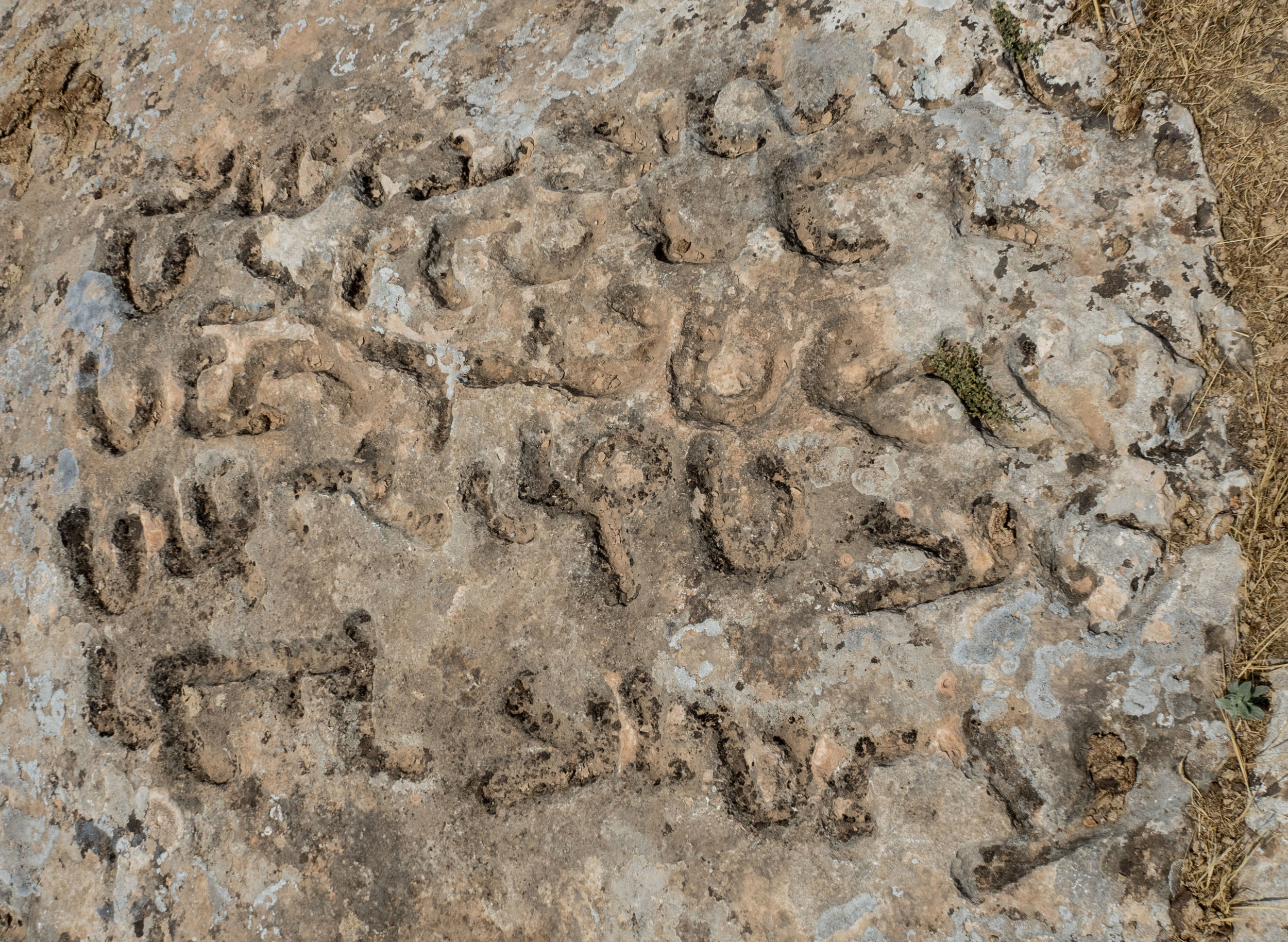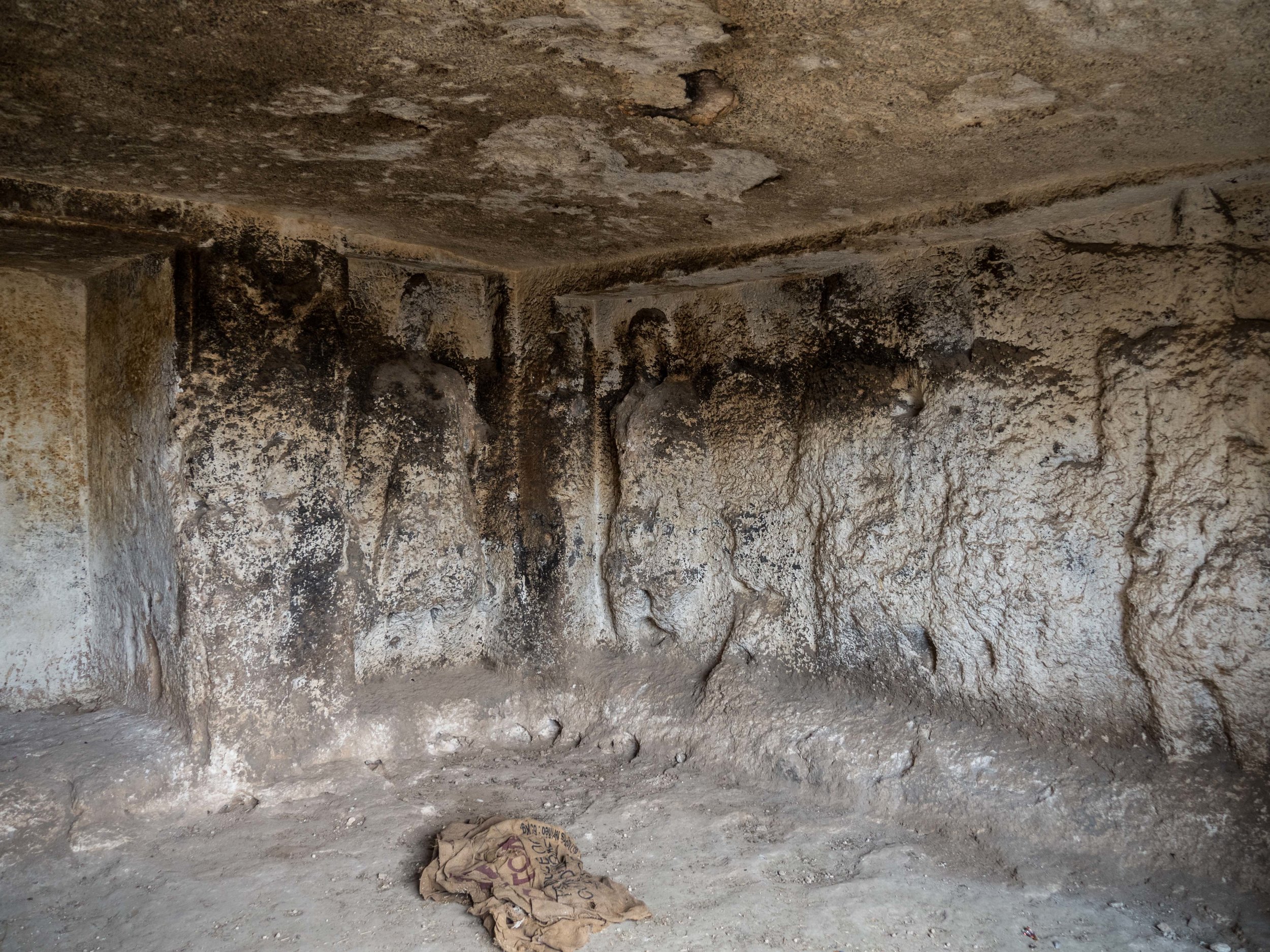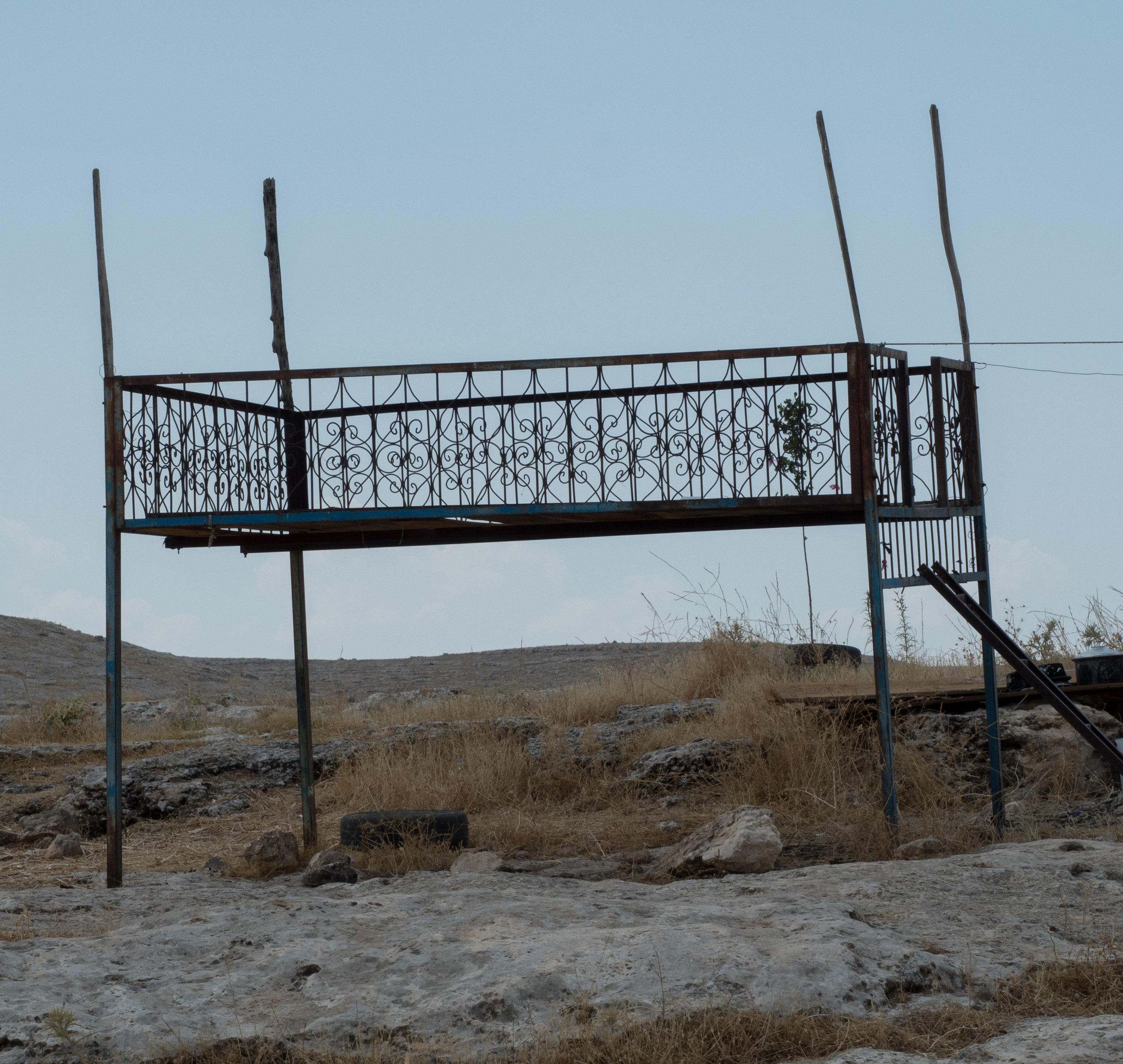Just walking out of my air-conditioned room in the morning felt like hitting a brick wall. And mind you! I had set the air conditioning temperature to 28º Celsius (82º Fahrenheit) in order to avoid a heart attack!
Masoud arrived as scheduled at 8:30 and we were off to see Harran, a town of Biblical as well as Koranic importance. It is mentioned in both of these religious texts and traces its history over 2000 years back. What you see today is a curious mix of a few beehive adobe houses that are about 250 years old, built on top of walls that most likely go back around 1000 years, now interspersed with modern village buildings that completely disregard the historical origin of their foundation and were most likely built before historical sites were most strictly regulated. Many of the beehive houses are dilapidated, used for animal shelters, or for storage. A few of them are preserved. One of them, a whole compound, is run by a family as a private little museum. They don’t charge entrance fee, but a friendly English speaking guide shows you around and the hope is that you leave a tip and have a cup of tea in their adjacent restaurant. I guess, the system works. I did both.
A set of beehives are arranged around a private courtyard, but are linked with each other by small doors. They are comfortable, cool, and a lot more spacious than one would expect. Each of them has a hole in the top of the beehive for ventilation. A kitchen hearth is built with extra exhaust areas. A double-beehive functions as a large living room. People sleep in communal sleeping areas and only the man of the household and newly-wed couples get some privacy and a raised bed (versus a mattress on the floor). Carpets are used for decoration.
I had seen a town just like this in Syria where the entire town was preserved in this architectural style. I vividly remember my visit there and have written in my Syria Blog about it. Proof again, how this area is more “Syrian” in culture, than Turkish.
Harran sports the oldest minaret and mosque ever built in Turkey, and a castle. Both are under re-construction now. The Turkish government seems to pour a lot of money into the restoration of historical monuments and at times goes a bit too far. I have seen many “over-restored” buildings that in their slick appearance hardly fit into their environment any more. But I guess that’s still better than letting things go.
Harran is a must-see if you are in Sanliurfa and on the well-explored tourist trail. But since I had a local expert as a driver, I added a few odds and ends to the itinerary which I had spotted on a local site map at the hotel. Sadly enough, this whole area is completely neglected by Lonely Planet, which is a real bummer and truly an oversight that ought to be fixed.
Of course, if you would follow US Travel Guidelines, you’d stay away from this area altogether as it is less than 4-10 km from the Syrian border and is a hotbed of crime, refugees, horrible dangers, and who knows what else, and therefore should be avoided. None of that can be confirmed on the ground; at least not by me! We even picked up a hitch-hiker.
We saw so much today that I can hardly keep track of it all and hardly can do any site justice in this blog. So, follow the hotlinks if you are interested in learning about each of these sights in more historical detail. We saw a lot of really odd, wonderful things.
First, there was Bazda Magarlari, an ancient underground quarry. It was refreshingly cool in these caves and a bit eerie. Two little kids “guided” us through the caves and at one point gestured towards a sizable hole in the ground: This is a Syrian refugee escape tunnel… translated Masoud’s phone. Really? Well, I did not see anyone coming out of it, but they said so, and tunnels much longer than this have been dug before…
Then, there was Sogmatar — a little village with no signage leading to it. Even Masoud had to stop and ask a few times before we found it. In the middle of town there was an information sign, but it was useless, as no map was attached to it. We stood around for a minute or so, looking very lost until a 12 year old boy from a nearby courtyard stuck out his head: Alil. He offered to show us around.
There was a cave with some worn down figures carved in the wall; ten or so. Was that a tomb? A temple? Alil could not help.
Alil pointed out a well from which Moses had struck water. To this day, it provides the villagers with healing water. You judge that one for yourself…
But most intriguing and authentic indeed: there was a hilltop with a relief depicting a woman’s head — presumably the moon goddess — and a relief showing a man with rays emanating from his shoulders. This one was clearly executed in a stylistic way in which Shamash, the sun god, was typically represented in ancient Mesopotamia. Wow!
It took me a moment to fully realize that yes, this is part of the so-called “Fertile Crescent”. This is ancient Mesopotamia, even though it ended up today as part of Turkey. That also explains why most of the population here is of Arabic descent. In addition to the reliefs there were worn inscriptions carved right into the hill top. Ancient Assyrian? Nobody seems to care much about these things. Should this not be protected, or sign-posted?
What was a contemporary curiosity in little Sogmatar were open air metal beds which could be found next to almost every house. I guess, that beats sleeping in the stuffy, little houses and protects people from the wild animals, or at least all the stray dogs.
But that wasn’t it. There was ancient Suayb Sehir. At least I think that was the name of it. It also could be known under the modern name of Goektas (Han el Bay’rur). It had a whole hill-top full of ruins and caves and ancient remains. Again, a little village girl was at hand to show us around and to lead us through a secret tunnel which connected some of these caves. One cave had been turned into a working mosque. It was nice and cool there.
And speaking of cool… It was one of those 120º days and we were out in the open sun… Climbing up the mountain in Sogmatar and being out for almost 45 minutes did both of us in. Thank goodness for the car, which was air conditioned and allowed us to recuperate. These village kids though… they did not even seem to notice the heat!
This was a full and fun day. But my energy was drained. No grading, no blogging. I managed to find an air-conditioned restaurant around the corner from my wonderful Armenian Convent Hotel. Then I did some laundry, which I hung up on one of the vine-covered terraces. As soon as I had hung the pieces and had finished one can of cold beer — yes, they sold that at the “convent” — the clothes were already dry.
At least there is one thing this inhumane heat and wind is good for!






